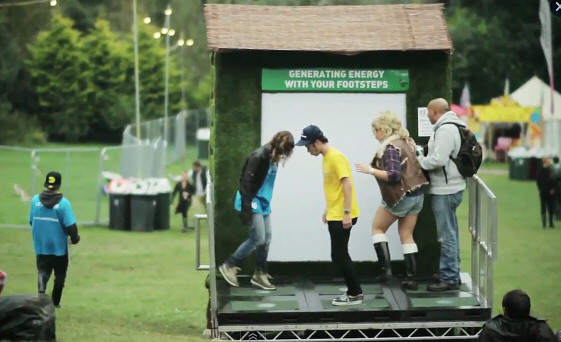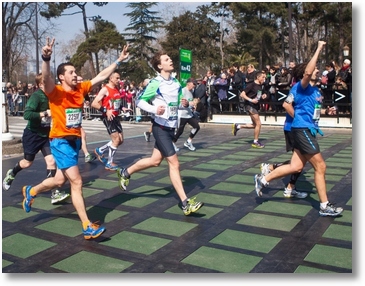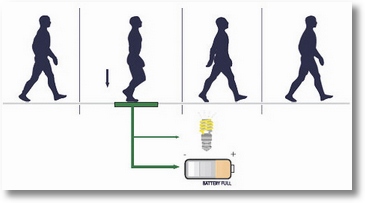One of the juiciest targets of the eco-energy industry over the years has been how to harvest the incredible amount of human activity such as walking, running, or even scratching an ear, into useable electrical power.
Now a UK company called Pavegen has developed an innovative floor tile made from recycled materials which can harvest the power from pedestrian footfall and convert it into electricity to be stored or used for things like adjacent lighting. The product has already picked up several awards for innovation, and now the company is slowly ramping up its efforts to power the world kinetically.
Each tile delivers 12V DC power and generates 7 watts per footstep, which may not sound like much, but when coupled with a large amount of people can deliver enough power to do some very interesting tasks. A section of the finish line at the Paris Marathon this year was covered with 175 of the tiles, which generated enough energy from the 40,000 runners to power a local stats board and lighting.
The company also installed a test rig into a London train station during last year’s Olympics which grabbed enough kinetic energy to power 12 LED floodlights at the location. The problem with all of this of course is the fact that it needs a substantial investment in order to conduct the retrofit of walkways, which in the end could mean the technology has problems delivering a feasible payback period.
But for now this is probably the best example around of this kind of technology, and as such it points the way towards a future where we may be able to generate reliable quantities of power using nothing more than our energetic lifestyles. We’re guessing that installing this in a Trappist monastery might not work so well.








7 watts per footstep is a meaningless measure. A watt is not a measure of energy. If a foot takes .2 of a second to compress a tile and generates power of 7W while doing so, and if 1,000 people (with two feet) pass each hour, that’s less that 1Wh. It would take nearly 1,300 hours (or 1.3m people passing) to generate 1kWh hour of electricity, saving about 10p.
Yep, I’m hearing what you’re saying.
Best Regards,
Nigel P.